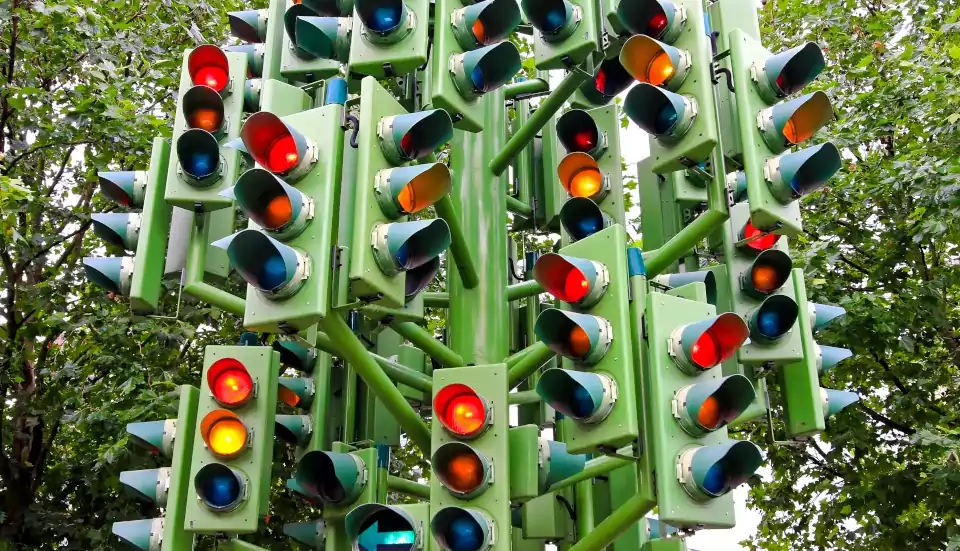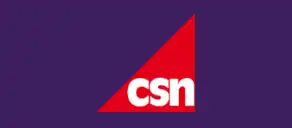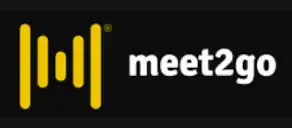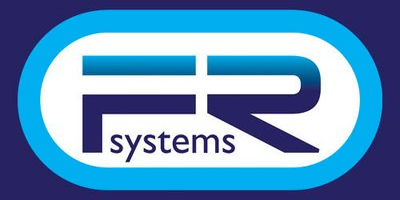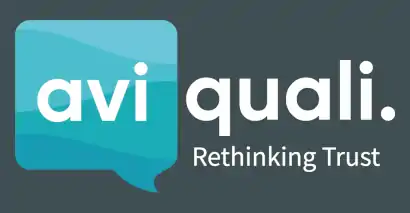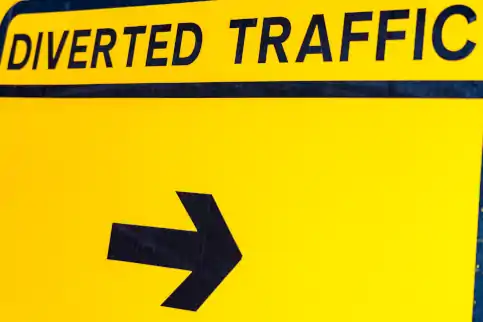How can you safeguard from too much website traffic?
Optimise your website to handle bigger numbers
It’s quite possible to optimise a website’s performance for high traffic to direct more power into your most essential tasks from the same sized servers. This increases your website capacity and improves the customer journey. For example, limiting your product ranges, the number of images you use to help sell each one, stripping out the video reviews and tutorials that use up valuable processing power can streamline your system performance. But why would you do that? They’re all the things your visitors love and want to see and the best players to help you achieve the ROI you’ve driven those high numbers to achieve.
There are other, far healthier, ways to optimise your site performance. Here's a few ways. Content delivery networks, also known as content distribution networks, respond to the less important pages of your site, leaving your system to do the heavy lifting required by the dynamic content due to high traffic that earns you the big bucks. A content delivery network can also serve the bandwidth intensive assets like pictures, JavaScript or css files used by your dynamic pages, assisting with high traffic levels when a browser loads images. That's what a content distribution network is for, and using a cached version of a browser script to produce some or all of your page can mean your server doesn't have to work so hard too.
Compression filters can help with your website's load time or distribute the dynamic content loading time over several view states, without high online traffic surges crashing your website or app, and stripping out those outdated or badly-coded website software or scripts or improving your own infrastructure by adding an extra host server or one server for your site's database can help speed website performance too, as well as app performance. When you compress images, this reduces your website's loading time on your web pages, which results in better search ranking as well as an improved customer journey. The end result: more business, more sales.
But is that enough to manage those vast bumps in traffic inflow? Sadly, not usually.
Load testing provides the data that drives the best decisions
Putting your website through its paces in a safe or staging environment at your hosting provider away from is the best way to see how your live site will perform under the pressure of traffic surges - but make sure you take the overhead of payment gateways and third party integrations into account. Fully simulating your visitor and system behaviour at your hosting provider means that load testing can be tricky to get right. Sending slowly growing levels of traffic into your website - under controlled conditions, of course - shows you precisely when its hosting provider architecture is put under pressure and when it will crumble due to an unexpected massive traffic spike, resulting in a website crash.
With all that new data at your fingertips, you’ll have all the information you need to know when your site is likely to come to a grinding halt due to surging online traffic spikes and how many excess users your cloud hosting provider will take. You’ll also see where your main bottleneck exists, and where you can, you can use your new data to help rectify those weak links and solidify your process and hosting provider so your system never stops serving data and can cope with more visitors.
It’s a great process for testing a web page or set of web pages - one we heartily recommend. If you want to know a little more about how high traffic load testing works or improving site speed, ask one of our experts. They’ll be more than happy to answer your questions.
Where does too much website traffic come from?
You’ve carefully watched your website build pace, growing in size and attracting more traffic inflow each month, and maybe upgraded your hosting provider. As life progressed, you’ve even upped your server capacity limitations to handle the regular traffic you achieve week by week.
All of your careful monitoring has kept you safe up to now, so why on earth would your diligence fail you in future?
Here are a few reasons why site operators are blindsided more often than you’d expect, even of the best, most popular and progressive operations.
1. Seasonal shopping days drive you over your peak
You’ve got a good handle on how much traffic flew through your homepage and your checkout system last year, but can you guarantee it’s going to be the same this year? Unfortunately, so many businesses underestimate what another year can do to grow their traffic and how much more popular online trading becomes over each year that sails by, and their websites crash.
All it takes is one deal or special event to make the headlines or a single must-have product to drive your figures over your limiting factors, resulting in a crashed website when your product drops. Black Friday, Christmas promotions, January Sales—have you really catered for every eventuality?
2. Unexpected traffic spikes
One of the biggest issues coming out of the unknown is receiving unexpected mainstream press coverage or a viral push from an unforeseen source. Without a chance to plan for your product featuring on a TV show, being worn by a superstar or highly praised by a social media influencer, the subsequent traffic overload from the unexpected traffic spike they deliver can shut your website down before you’ve had a chance to react to the news.
There are also events from less than respectable sources that drive traffic to unexpecting websites. For example, bot traffic and black hat operations are designed to crash sites, bringing awareness to a particular cause - your site just happened to be in the wrong place at the wrong time.
3. Marketing campaigns that go far better than you expect
Okay, so your monthly emails and social media channels or online advertising bring roughly the same amount of visits and sales each month. But what about that stroke of genius coming from your marketing department that hits hundreds of brand new markets and new leads?
If you've failed to prepare for a high-volume day of traffic, you won’t just lose the sales from that day when your site crashes, but all the return and repeat business when your brand’s customer confidence hits zero for all those new would-have-been customers.
4. A new product, collection, event or appearance drives you over the limit
Product launches and single-day special events are some of the big-hitting traffic drivers that can cripple an ill-prepared business with system requests. Pre-event and pre-sales traffic is often enough to warn you of what’s ahead, or it could even be enough to choke your system before the promotion even launches. Being prepared for a big hit from more customers means preparing for all of its in-roads— that might drive traffic - not just sale day.
5. A new third party system is added
Website and app technology is a fast moving field. Your developers may be adding additional modules or services to your site's code all the time. The impact of third party systems involved in the production of your pages or handling of your transactions on the ability of the system to cope with high traffic levels is often overlooked when considering code changes, and can even be a source of unauthorised load. If third party systems, third party integrations or payment gateways mean you have insufficient resources or lead to a memory leak, your website will ultimately crash.
High online traffic crashing a website looks like a broken dam flooding a town in a disaster movie. Or what about those Boxing Day sales queues you see outside your favourite high-street retailer, whose teams and floor space are going to be overwhelmed as soon as they open the doors at 9am? You might see the same effect on an online retailer's site too.
For your web servers, there just isn’t the processing power available to manage excessive volumes of traffic. The result is grinding everything to a halt until the problem gets sorted. That's how high traffic crashes websites. Once the site starts to experience technical difficulties, it may not come back up again even when the high traffic abates - a frequent problem is that visitors already on the site refresh the page whenever it is slow or comes back with a hosting error page, processing capacity resources error or broken code error, so when the website crashes due to high traffic, it may stay crashed.
What should you do with your overflow traffic?
The solution is to distribute your website or app traffic into areas where it’s safe yet still has access to your website at a pace your system can comfortably manage with its processing capacity resources. When you redirect excess users and their additional requests away from your bottleneck processes, it means that they can process faster. This prevents website crashes.
You could pay for those additional web servers that will comfortably cater for every last user you could possibly attract, but then that’s a lot of wasted resources for the days you only use a tiny percentage of their capabilities. It doesn't make sense to pay for overly robust website infrastructure capacity when you only have insufficient resources some of the time.
It would be like paying for a fleet of gigantic trucks to deliver a few pizzas to the next street. Of course, for the few days each year that you need to transport 100,000 pizzas to the opposite end of the country, those trucks are incredibly handy, but for the other 360 days—you could drop those boxes off from the back of your bike. And all those empty trucks? When you’re not using them, they’re just draining your pocket in parking fees and maintenance costs.
Could there possibly be a way of efficiently managing high online traffic overflows that don’t mean investing in architecture or a more expensive hosting plan or dedicated server that you don’t need? Of course there is.
A comfortable queuing solution keeps everyone informed, aware, calm and content, and prevents website crashes from high traffic
Our online queuing system filters out your overflow of website visitors into a simple, seamlessly delivered digital waiting room—in your company colours, brandishing your logo, speaking in your brand voice, keeping everyone calm, comfortable, and collected during high online traffic conditions, resulting in more sales end eliminating high traffic crashes. It's fair for website visitors with poor internet connection too.
Queue-Fair offers the most accurate Virtual Waiting Room on the market, managing traffic inflow perfectly for you and your website visitors on your busy days.')
To prevent frustration rising during web traffic peaks, each customer is kept up to date with the information they need: where they are in the queue, how many customers are in front of them, how long it will be before it’s their turn and that the queue runs on an entirely fair, first-come, first-served basis, providing a responsive experience across the whole user journey, resulting in more customers.
Understanding that they’re being taken care of and that they’ll get those festival tickets or new trainers in just a few minutes, they’ll be happy to sit tight while your system catches up with its backlog.
Heavy traffic means a problem - but only if you’ve failed to prepare for web traffic peaks
Your virtual waiting room might only kick in a handful of times each year, but you’ll be so glad it's there when it does. It’s the safety net that will save your high traffic websites over and over again. It will help you boost customer confidence, conversions, and your top line figures. Isn’t it time you talked to our team before any one of those disasters we spoke about strikes?
